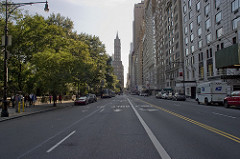Posting this which I got from Jason Stajich I am passing along this request from the EuPathDB/FungiDB team. There are opportunities for UK and US placement of a person. Please feel free to forward to suitable candidates. There is hope that a person with fungal biology experience who wants to focus on outreach and community …
What’s new in the intersection of microbiology and human use of the environment? Here are some recent papers and their abstracts. The first paper is important because it describes the microbiological conditions of the waters that will be used in the 2016 Olympics: Environmental and Sanitary Conditions of Guanabara Bay, Rio de Janeiro – Giovana …
Autumn is not just a beautiful season in which multicolored leaves fall to the ground from their branches. It is also a good time for all kinds of microbes to flourish with the new addition of delicious leaf litter nutrients. A new paper from Irga et al studies the connection between the fungi found on leaf litter and …
Lots of cool new papers to share. Unfortunately, many are behind paywalls. Humans in hospitals Towards an antimicrobial ‘microglove’ – Ewoud Reilman – Scientific Reports (OA) Healthcare workers frequently experience difficulties in complying strictly to hand disinfection protocols. This study was therefore aimed at the development of a hand rub with antimicrobial activity that forms …
A new paper just came out from Dunn et al about how urban stress effects microbial communities in Manhattan. Urban structures can provide barriers to species movement and create islands of life, both for macro- and microscopic creatures. Here, they sampled soil bacterial and fungal species, as well as ant communities, from small road medians and large …
A new open access paper in Frontiers in Microbiology looked at the microbial communities found on buildings of the Auschwitz concentration camp in Poland. I’m currently travelling, so I only have time to post the abstract here. One Hundred Years by The Cure, a song about war and destruction, seemed a good choice for this post. …
A really interesting study from Rogawansamy et al explores the effectiveness of various anti-fungals on two common household fungal contaminants. They used a classic inhibitory disk assay, commonly used to test antibiotic efficacy and resistance. They tested Cavicide, Virkon, 70% ethanol, vinegar, and tea tree oil and found that the tea tree oil was most effective on both …
There is a new paper out in Frontiers in Microbiology by fungal geneticist Joan Bennett that is fascinating: Frontiers | Silver linings: a personal memoir about Hurricane Katrina and fungal volatile. Here is how it starts: In August 2005 I was about to start a sabbatical leave during which I planned to work on the annotation …
Now for something lighter. The website Science Daily reported on a study at Clarkson University in Potsdam, New York, to look at mold in houses reported to be haunted. The news announcement reports, “By comparing these samples to samples from places with no reported hauntings, the researchers hope to identify factors unique to the haunted …
I wrote a post on the Seagrass Microbiome website yesterday about my struggles with fungal ITS sequencing data which I thought I’d share here as well in case anyone is looking to jump into the fungal fray. To summarize: changing the default method of the QIIME assign_taxonomy.py script from “UCLUST” to “blast” dramatically increased the …


